From the pedestrian perspective the situation appears entirely different. It is dominated by an axis that cuts diagonally through the block of the building site and runs towards the entrance to the metro station. Here a completely different direction is dominant, which at the pedestrian level has great significance as a main circulation zone for the client centre of the major project “Wiener Wohnen” and also for the planned high-rise building.
High-rise Gate 2
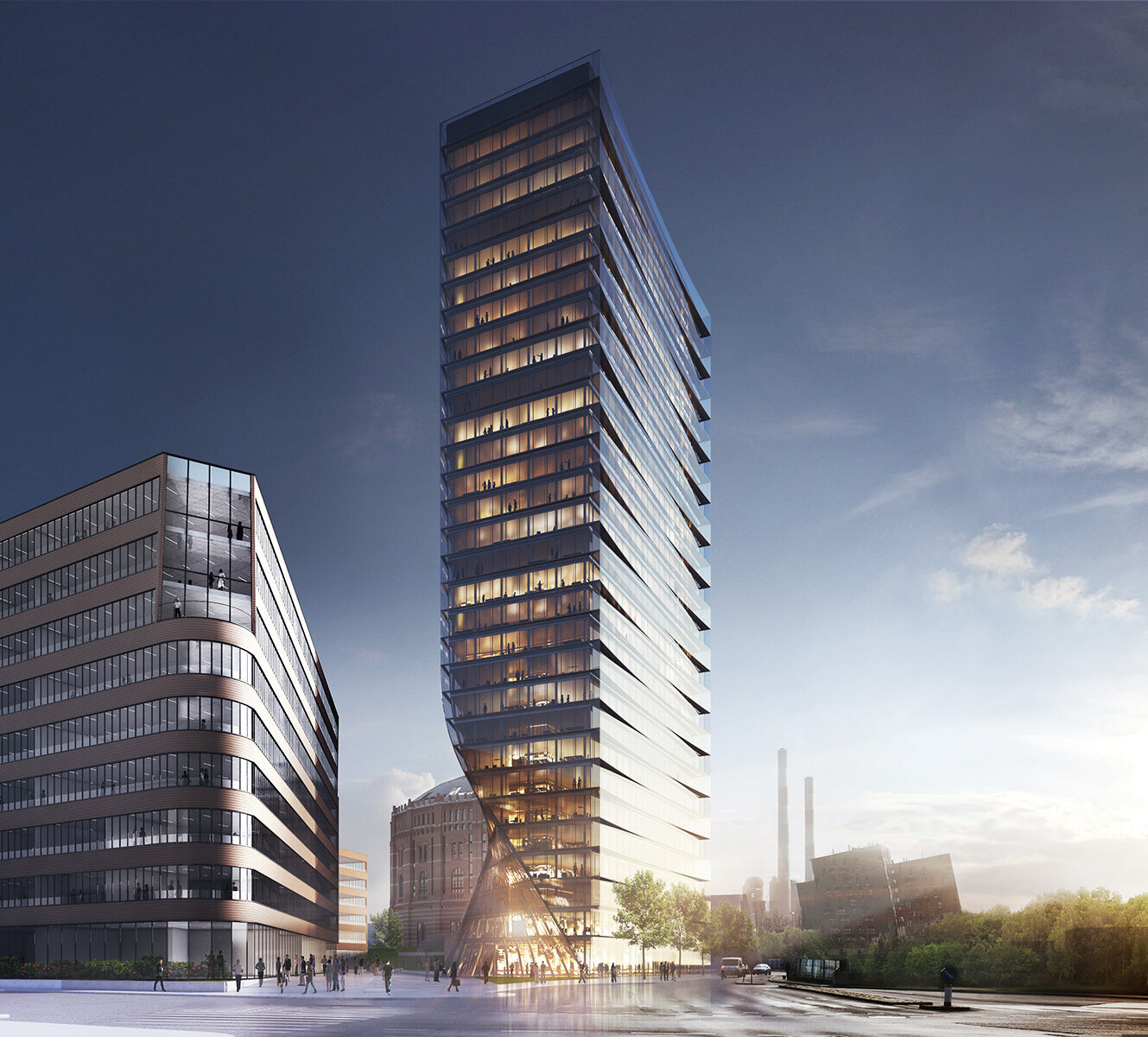
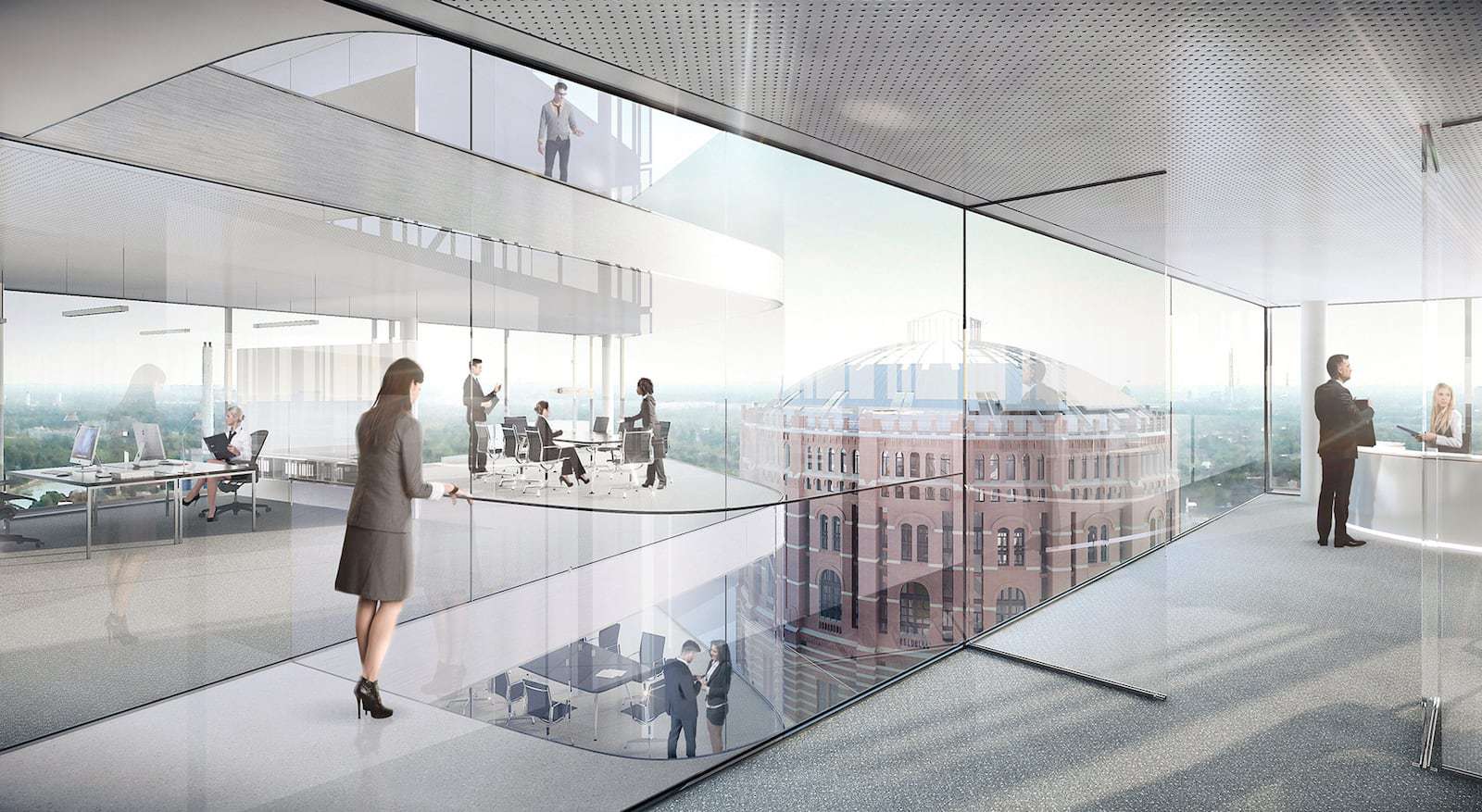
Year
2014
Venue
Vienna
State
Competition
Category
Mixed
Size
41,992 m²
Year |
Venue |
State |
Category |
Size |
|---|---|---|---|---|
2014 |
Vienna |
Competition |
Mixed |
41,992 m² |
Year
2014
Venue
Vienna
State
Competition
Category
Mixed
Size
41,992 m²
Gate 2
One of the most important fields of tension within which high-rise buildings are developed is the one established between the local relationship, which every building has with its immediate surroundings, and the global relationship, which particularly tall buildings establish with an entire part of the city. These relationship structures are not always in harmony with each other.
One of the most important tasks therefore is to mediate between these different scales.
In urban planning terms we see a clearly dominant direction that is shaped by the prominent streets Döblerhofstraße and Leopold-Böhm-Straße and finally by the panorama route of a former railway line. Despite the dissolution of the structures in the immediate surroundings we believe that the building should refer to this main direction and integrate itself in the clearly recognisable block grid and even make it more strongly perceptible. Gate 2 would then become a striking corner pier of this urban planning typology.
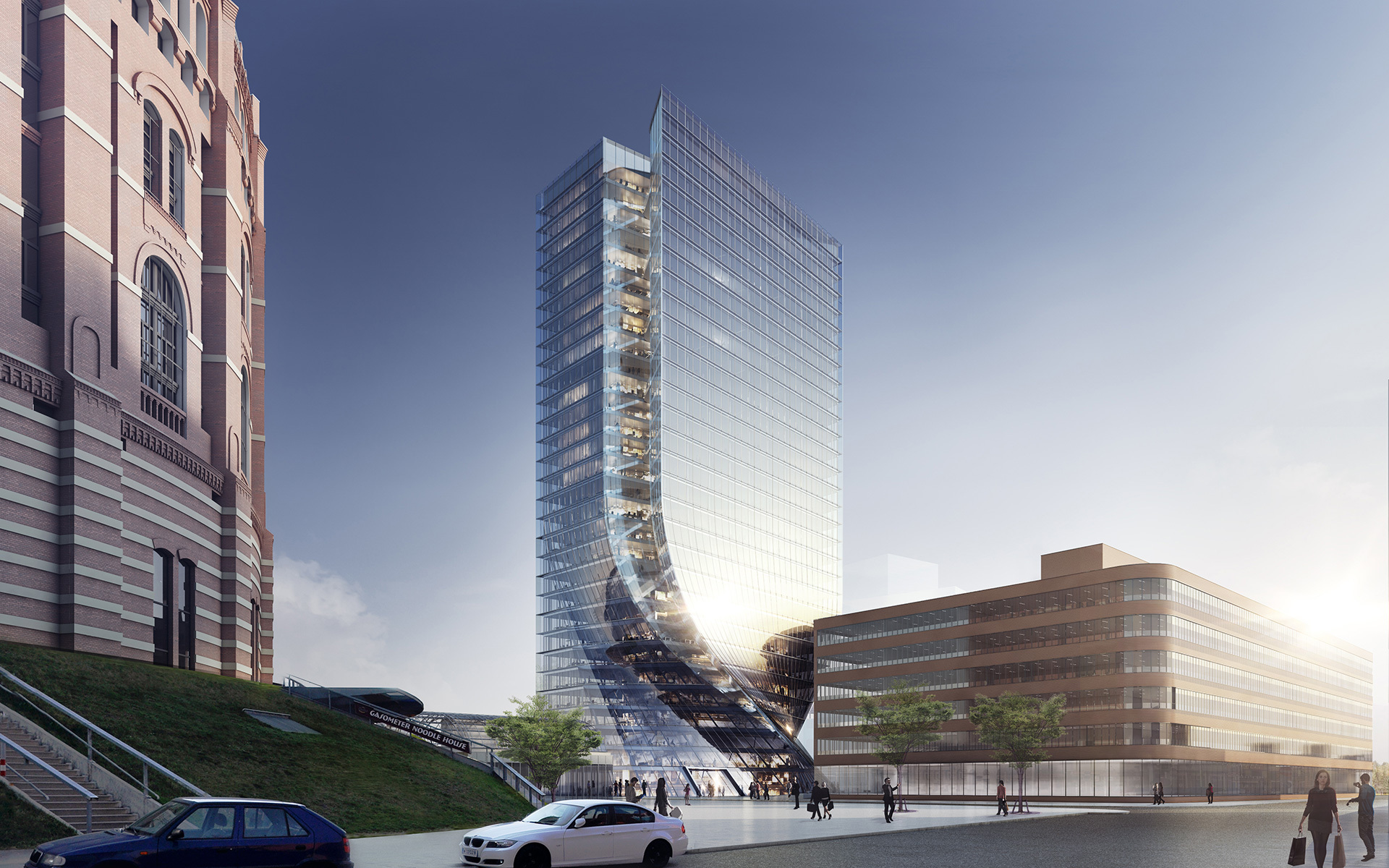
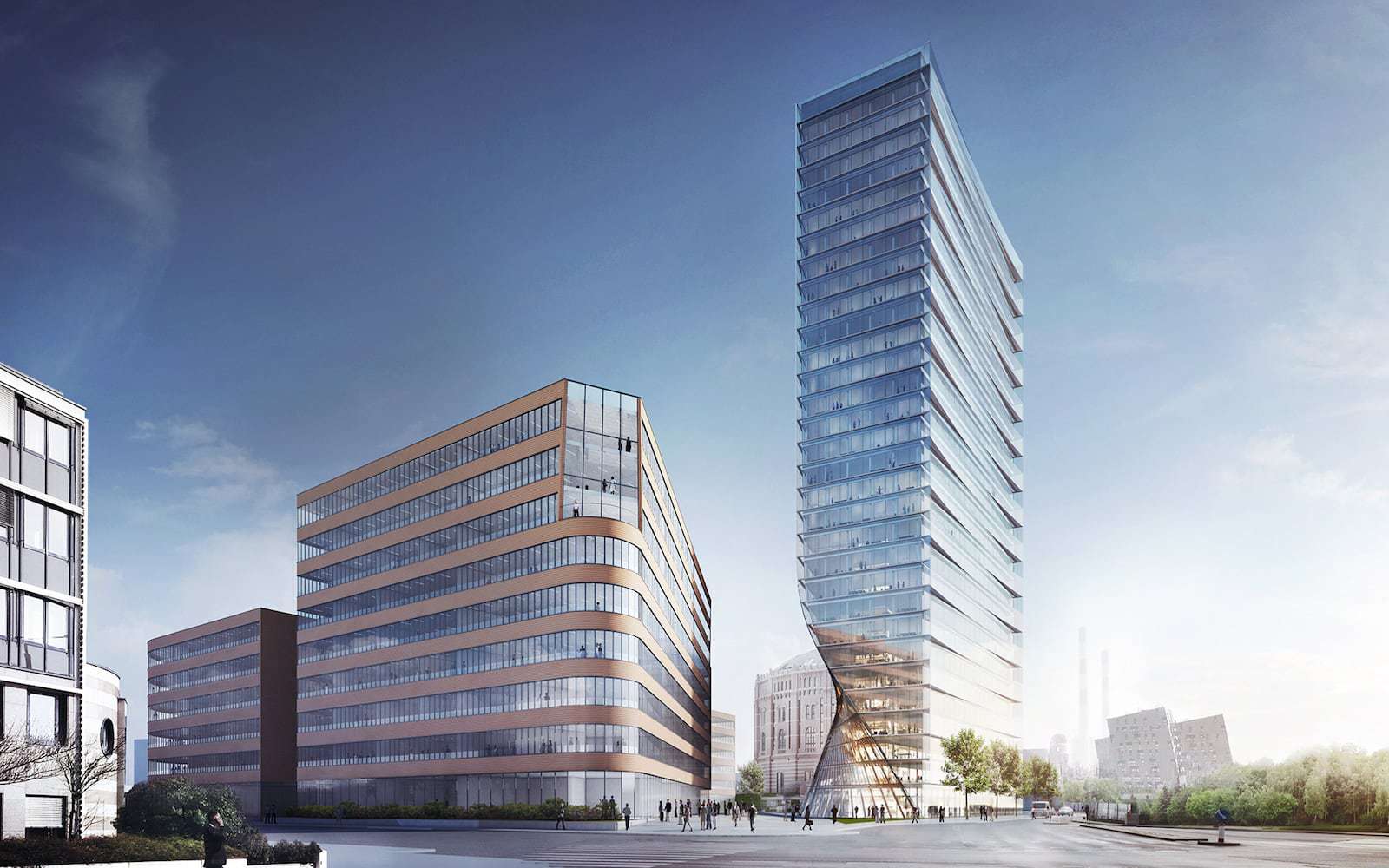
Above all, however, this new axis should relate to the gasometers as architectural monuments and to the development erected to the north of them
If the boundaries of the building site, which is defined by Döblerhofstraße and the diagonal, were to be fully exploited the view of the gasometers would be blocked, as the diagonal only tangentially brushes the gasometers themselves.
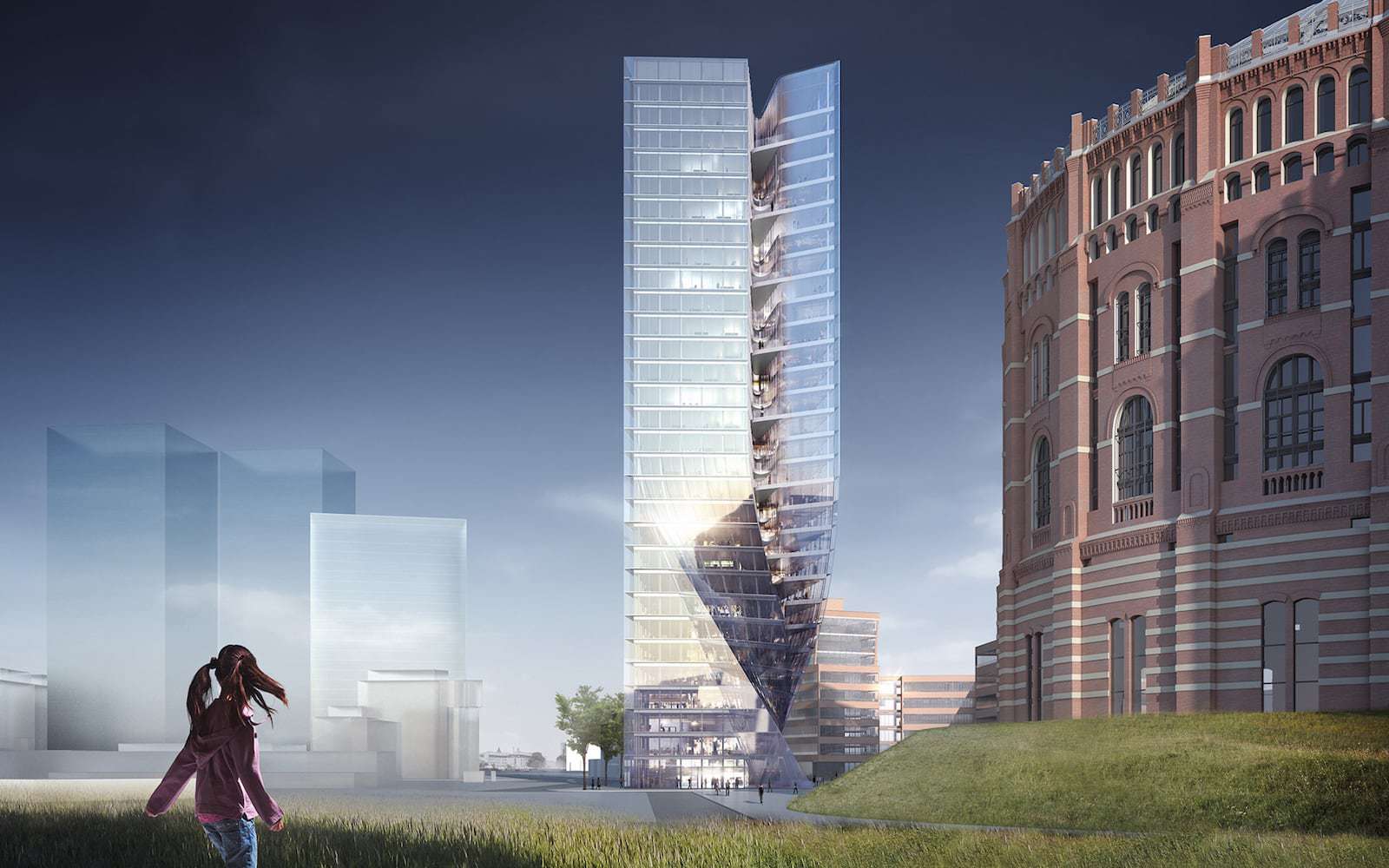
All in all, this building unites unconventional approaches to solutions, which vary from large to small scale.
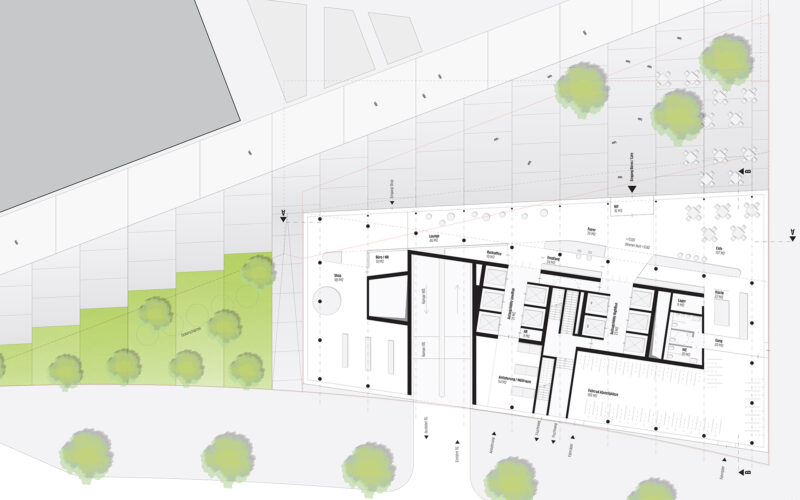
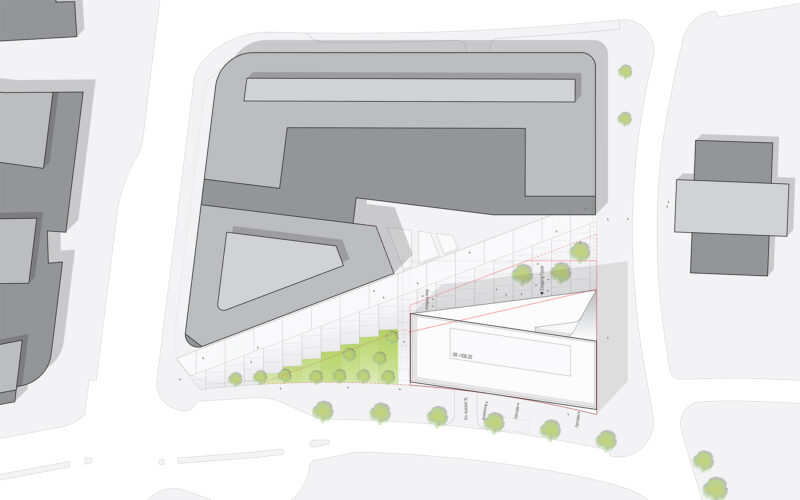
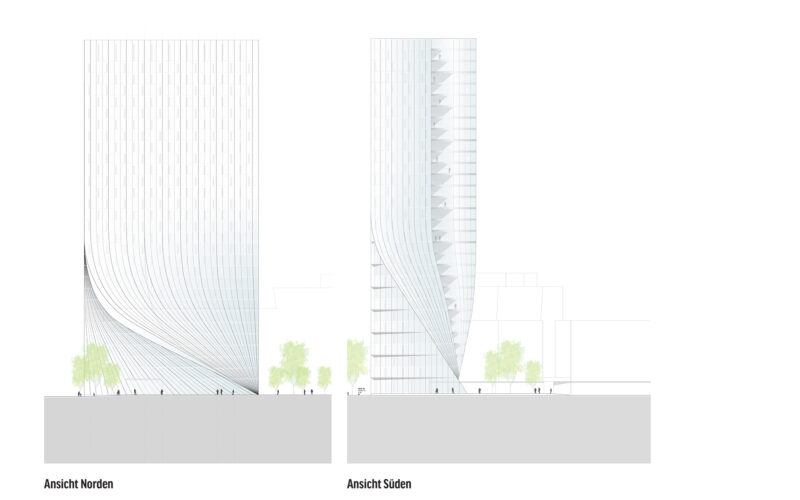
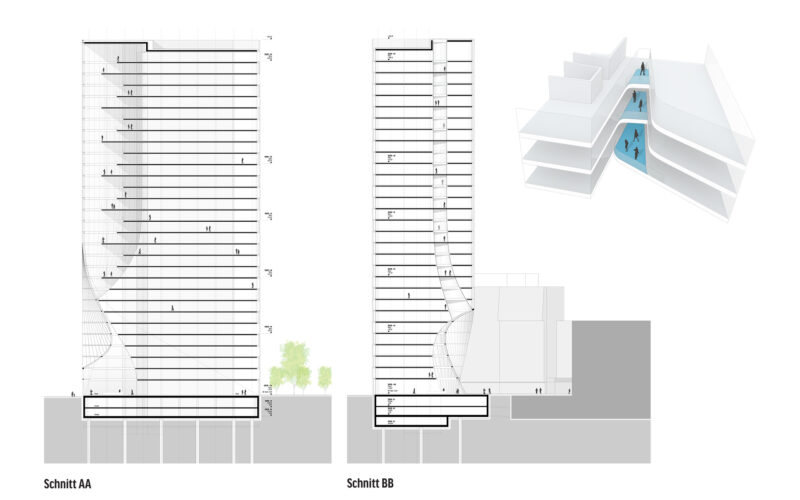
On the basis of this existing, but highly efficient situation three goals were defined:
The view of the gasometers, at least in urban space with the classic eaves height, must be revealed consequently in this area the building is deliberately moved back from the existing diagonal to create a significant articulated public space that serves as the public access to both the projects on the site.
The volumes that can be realized should be fully exploited. Thus our second goal was to make an approach to the diagonal again over large areas of the building, at least as far as the rule of the “two hour shadow” allowed, in order to achieve the required cubage.
But as it grows in height the building should again refer to the overall structure of the block edges and street spaces as referred to above. This is the third goal.
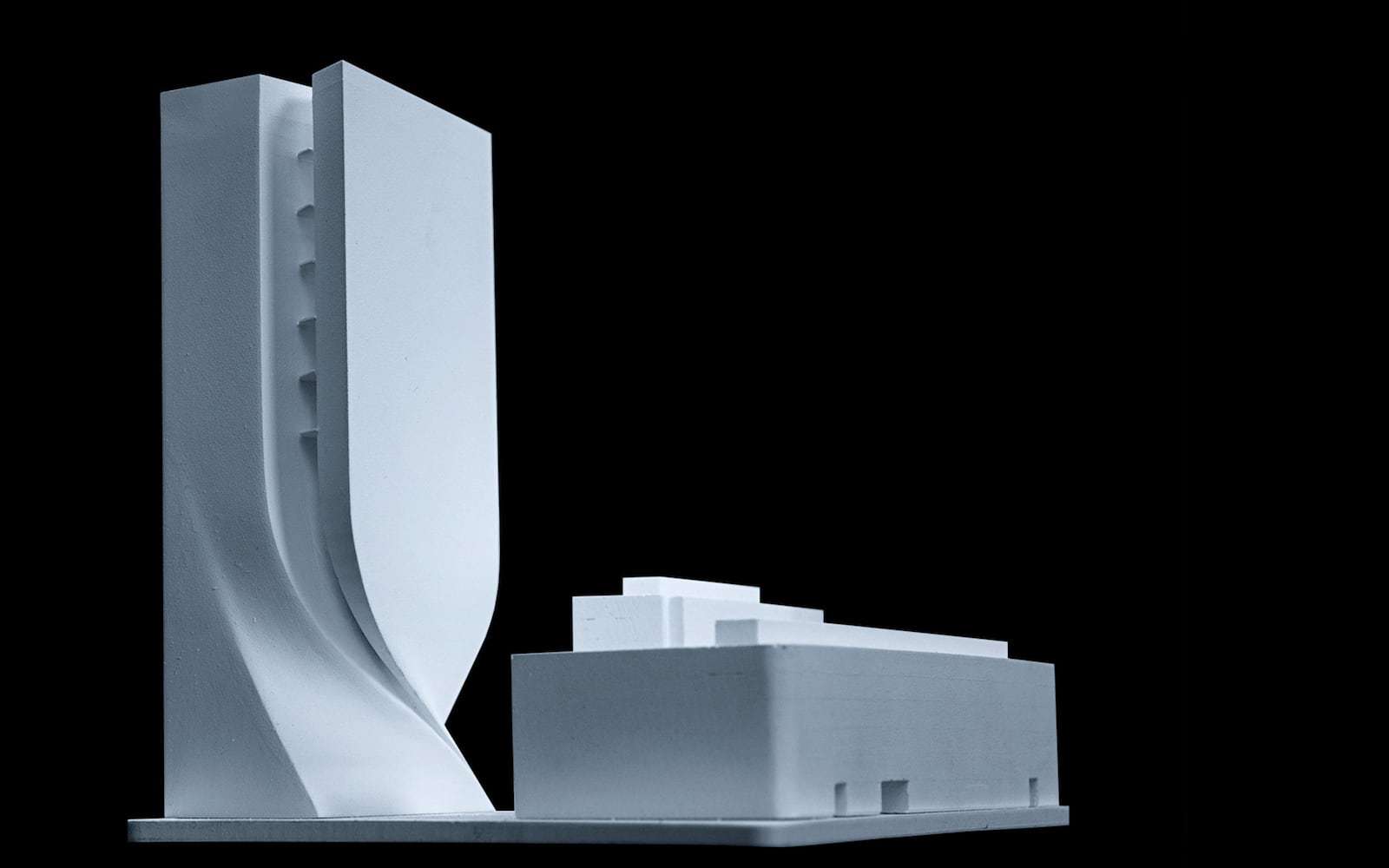
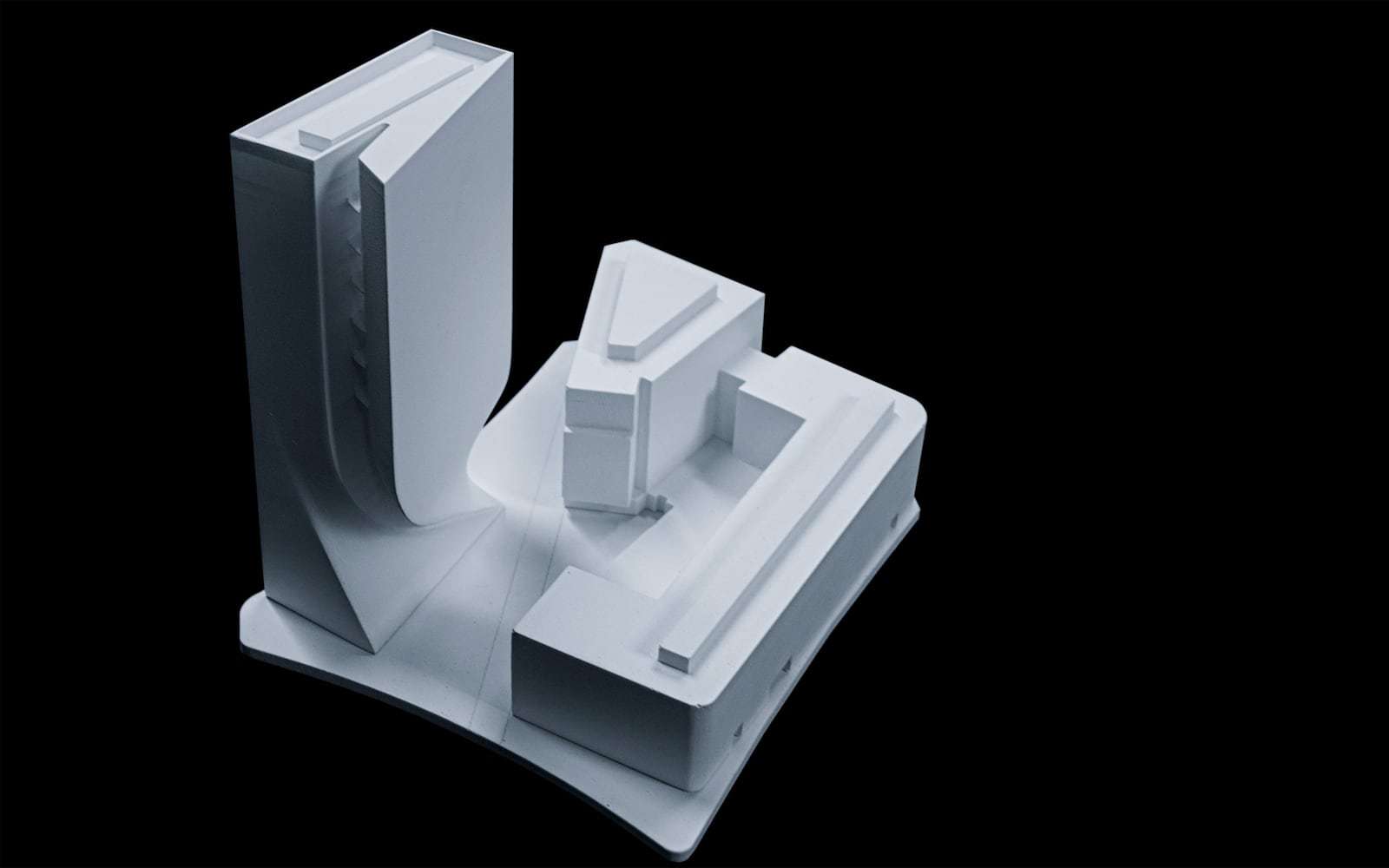
Architecture
Pichler & Traupmann Architects
Mario Gasser
Project team
Philipp Weiß
Client
Bauträger Austria Immobilien GmbH, Vienna
Structural design
werkraum wien ingenieure ZT GmbH
Structural fire protection
Norbert Rabl ZT GmbH, Graz
MEP engineering
ZFG Projekt GmbH, Baden
Elevator engineering
KONE Austria AG, Vienna
Hard facts
Usable floor area: 26.265 m²
Gross floor area: 41.992 m²
Gross cubic volume: 144.805 m³
Location: 3rd district of Vienna, AT
Function: Mixed use (offices, shops)
Scope: Procedure calling for reports by experts with application procedure
Model
Harald Schmidt, Vienna
Renderings
isochrom, Vienna